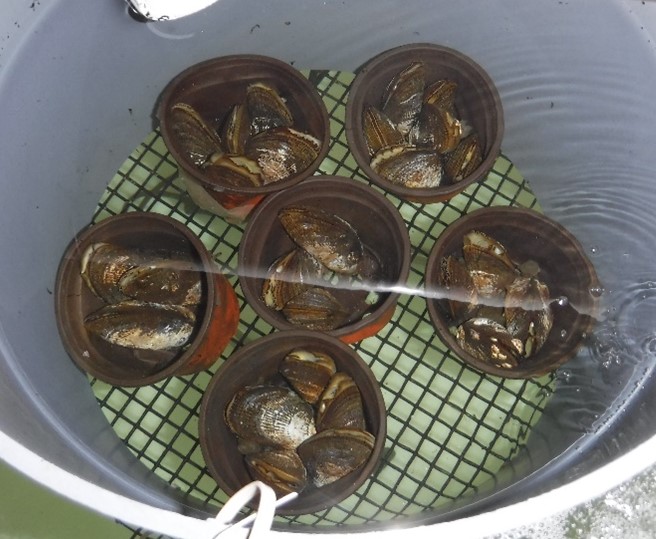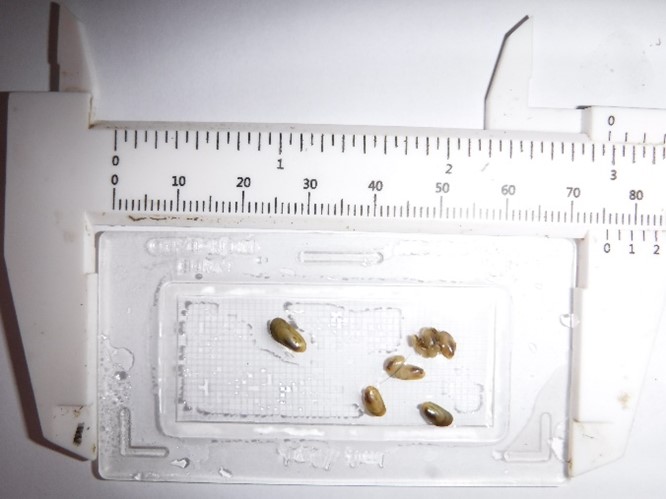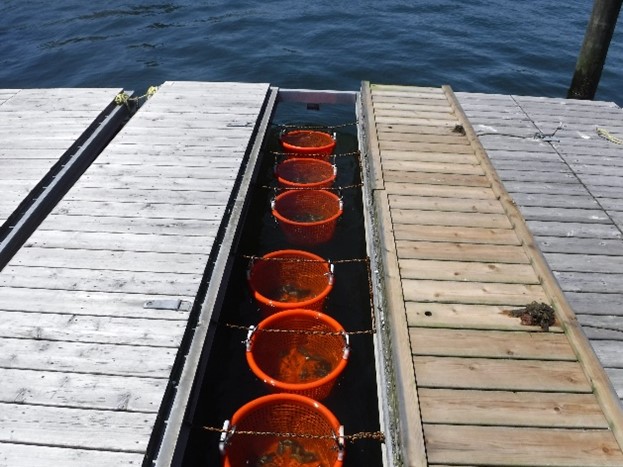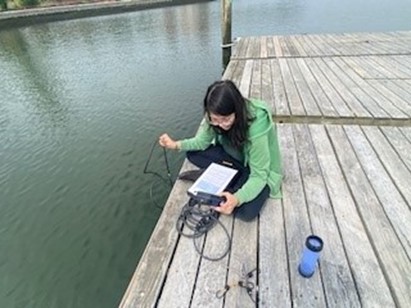Ribbed Mussel Gallery

Figure 1. The Bioextraction Initiative seeks to improve water quality by using ribbed mussels (G. demissa) to filter out nutrients from the water column. This two year project focuses on: best practices for culturing in a hatchery, efficiency as a nutrient resource management strategy, and potential as an animal feed to create a sustainable process. Photo courtesy of Barry Udelson, CCE Marine Program.

Figure 2. A sampling of adult wild mussels was collected to establish culturing methods in the hatchery. These mussels undergo a mild temperature shock to trigger spawning using the Bin-Silo method developed at Rutgers University. Photo courtesy of Barry Udelson, CCE Marine Program.

Figure 3. Larvae are raised in conicals for two weeks. After they undergo metamorphosis, they are moved to downwellers and fed cultured algae. Once grown to adult size, they are used in the second year of grow out. Photo courtesy of Barry Udelson, CCE Marine Program.

Figure 4. A second sampling of wild ribbed mussels was collected at Huntington Harbor and placed in grow socks on floating docks at Goldstar Battalion Beach and Northport Harbor. These adult mussels were used for the first year of grow out to assess their nutritional value as an animal feed. Photo courtesy of Johanna Mazer.

Figure 5. Water quality measurements such as temperature, salinity, and pH were taken at each site using a water sonde. Photo courtesy of Johanna Mazer.

Figure 6. Ribbed mussels were weighed and collected for processing and lab analysis. The lab analyzed parameters including nutrient composition, organic pollutants, trace metals, and pathogens. Photo courtesy of Johanna Mazer.
- 1/6
- 2/6
- 3/6
- 4/6
- 5/6
- 6/6